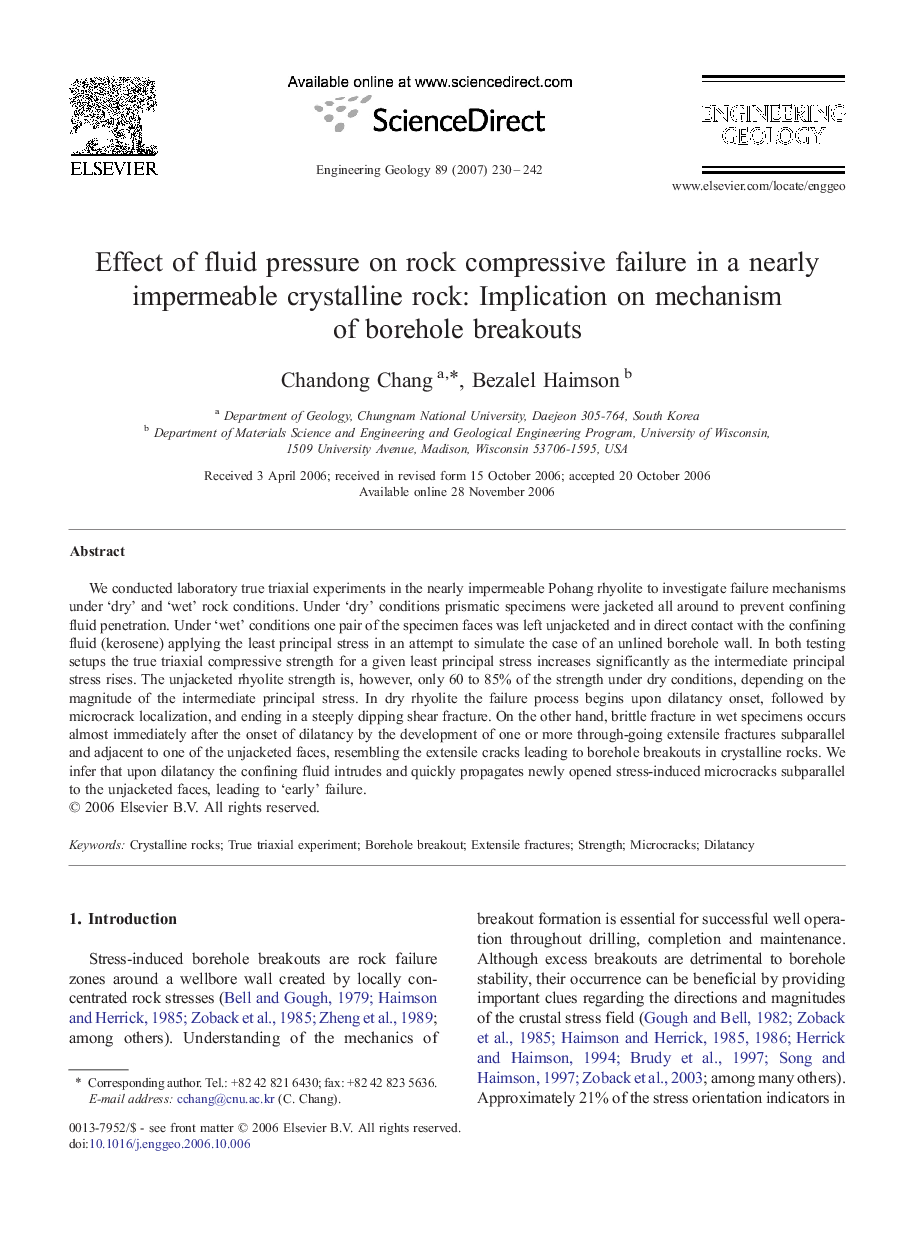| Article ID | Journal | Published Year | Pages | File Type |
|---|---|---|---|---|
| 4745083 | Engineering Geology | 2007 | 13 Pages |
We conducted laboratory true triaxial experiments in the nearly impermeable Pohang rhyolite to investigate failure mechanisms under ‘dry’ and ‘wet’ rock conditions. Under ‘dry’ conditions prismatic specimens were jacketed all around to prevent confining fluid penetration. Under ‘wet’ conditions one pair of the specimen faces was left unjacketed and in direct contact with the confining fluid (kerosene) applying the least principal stress in an attempt to simulate the case of an unlined borehole wall. In both testing setups the true triaxial compressive strength for a given least principal stress increases significantly as the intermediate principal stress rises. The unjacketed rhyolite strength is, however, only 60 to 85% of the strength under dry conditions, depending on the magnitude of the intermediate principal stress. In dry rhyolite the failure process begins upon dilatancy onset, followed by microcrack localization, and ending in a steeply dipping shear fracture. On the other hand, brittle fracture in wet specimens occurs almost immediately after the onset of dilatancy by the development of one or more through-going extensile fractures subparallel and adjacent to one of the unjacketed faces, resembling the extensile cracks leading to borehole breakouts in crystalline rocks. We infer that upon dilatancy the confining fluid intrudes and quickly propagates newly opened stress-induced microcracks subparallel to the unjacketed faces, leading to ‘early’ failure.
